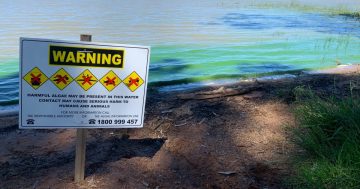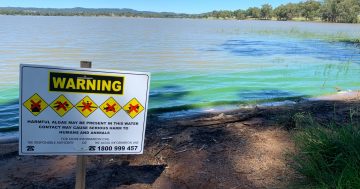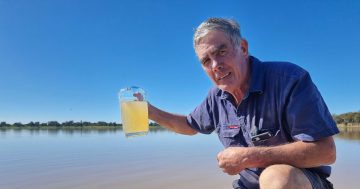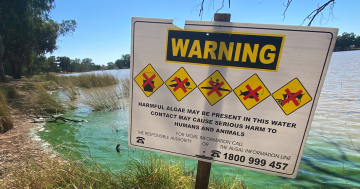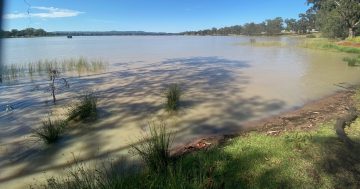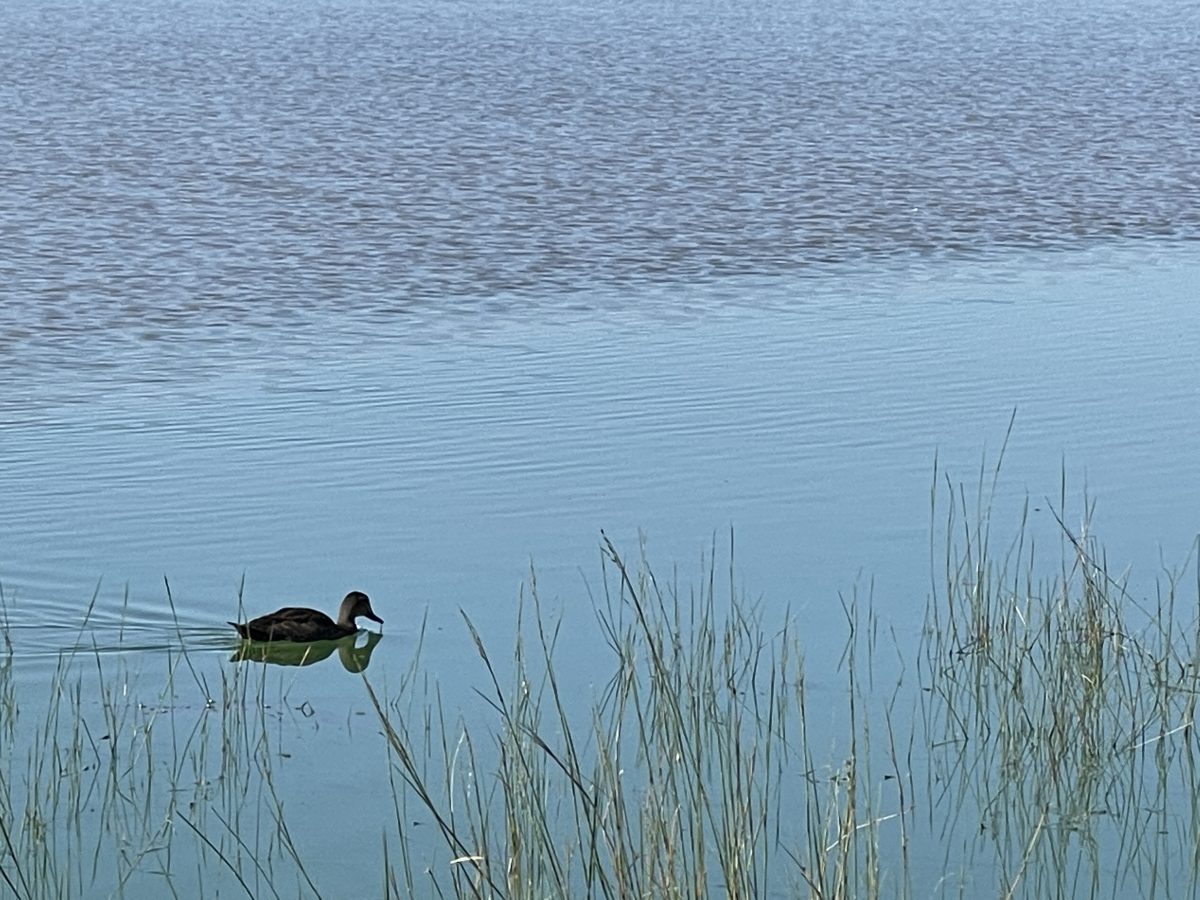
A duck drinks water in Lake Albert that could be poisonous. Photo: Supplied.
Concerns have been raised about wildlife drinking toxic water from Lake Albert, as the popular waterway is set to remain off-limits to swimmers and boaters for the third consecutive week.
On 24 January, Wagga City Council issued an alert for the lake, advising residents not to enter the water due to high levels of blue-green algae – a cyanobacteria which can produce poisonous toxins. The alert remains current as at 9 February, with no timeframe on when restrictions may be lifted.
The Moorong Veterinary Clinic has urged people not to let their dogs drink from or swim in the lake, raising questions about the safety of ducks, frogs, birds and other animals for whom the lake is a natural habitat.
Region was sent video footage of ducks drinking the lake water next to a stretch of thick, cloudy slime, recorded on 5 February.
Dr Matt Herring, a wildlife ecologist whose research has focused on the Riverina, said it was a danger we should not ignore.
“Waterbirds need to drink every day. If that water has high levels of blue-green algae, they can get poisoned,” he said.
Duck health is even an issue for those who shoot them. Victoria’s Game Management Authority has warned hunters operating in blue-green algae infected waters to “discard the internal organs (particularly the liver) of ducks and rinse the duck with clean water prior to cooking and eating”.
Dr Herring said it was an even bigger issue for bird species already endangered, such as the Australasian bittern. But solutions were “really tricky”.
“We can disturb the birds and get them to move on. That’s difficult but there is alternative habitat that isn’t affected by blue-green algae.”
Lake Albert and Griffith’s Lake Wyangan have been plagued by algal outbreaks over the past five years, disappointing residents who have been unable to use their town’s once valued recreational facilities in summer.
“It’s so unfortunate. Getting people outdoors is so important for people’s physical and mental health. We talk about nature deficit disorder. Kids don’t get outside and play enough. Ensuring water quality is good enough to promote boating and fishing should be a priority,” Dr Herring said.
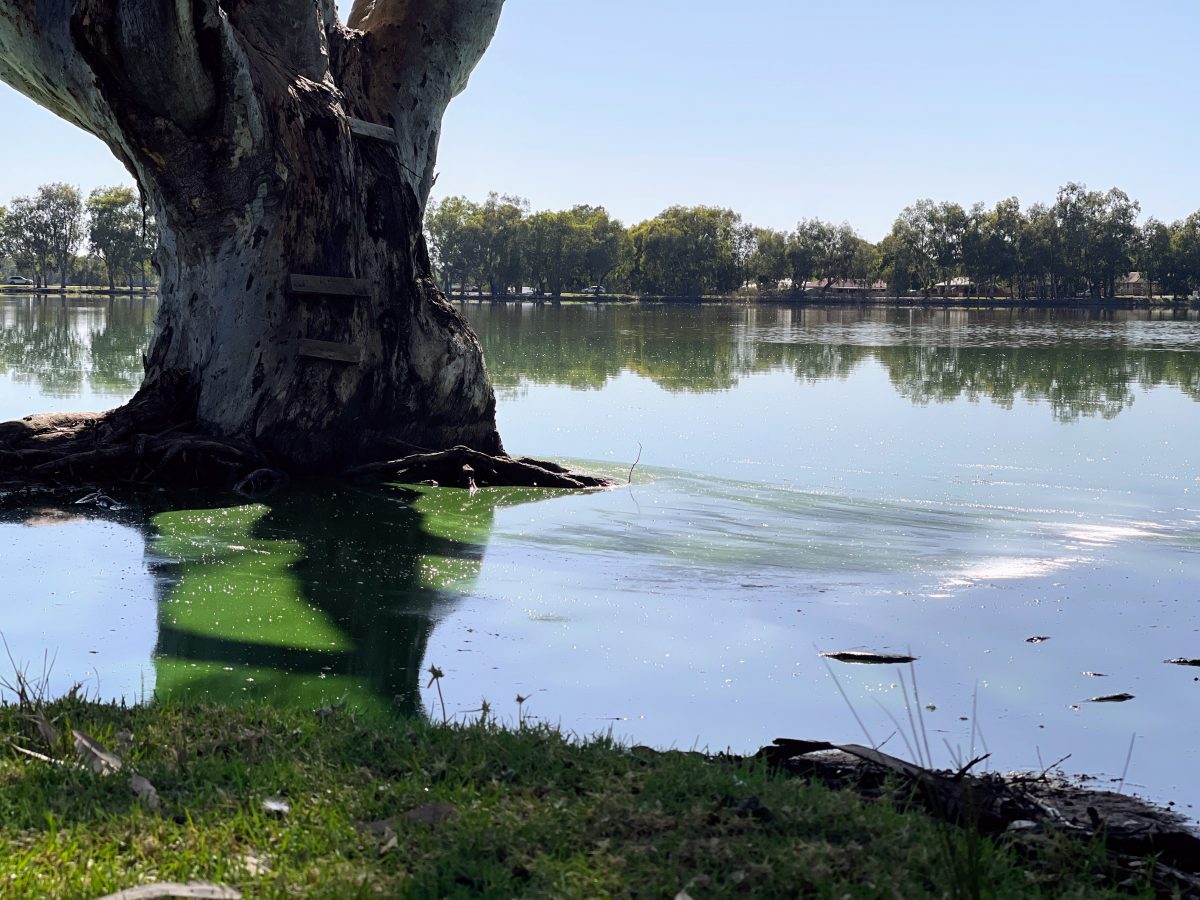
Slimy water at Lake Albert on 5 February. Photo: Supplied.
Wagga councillor Georgie Davies, who campaigned on improving the lake when running for local government, agreed.
“It’s the peak time for people to be using it and it’s really frustrating that the lake is out of use,” Ms Davies said.
In 2018, council installed five solar-powered buoys which used ultrasound technology to help control algae. Region asked whether they were still in use and whether they were working effectively.
“The buoys assist in the management of algal growth; however, they will not prevent all outbreaks when ideal conditions for blooms exist,” a council spokesperson said.
“The buoys are regularly serviced by the manufacturer and have been working effectively up until some were vandalised in mid-January. This caused one buoy to stop working completely and two others to operate below their usual capacity. The manufacturer attended during the first week of February where the buoys were repaired. All buoys are now operating at their full capacity.”
Council also advised there are no other measures in place to combat algal outbreaks, though it is “undertaking weekly testing of Lake Albert to monitor the situation”.
Dr Herring wants all levels of government to be more proactive in tackling the problem.
“There are so many organisations involved [in wetlands management] but nobody takes the lead.”




